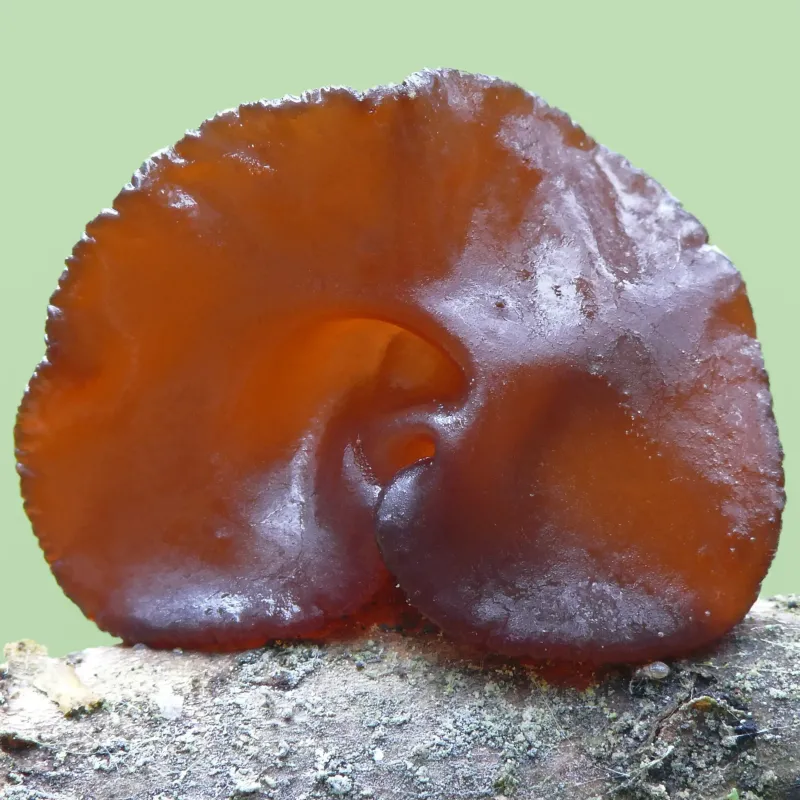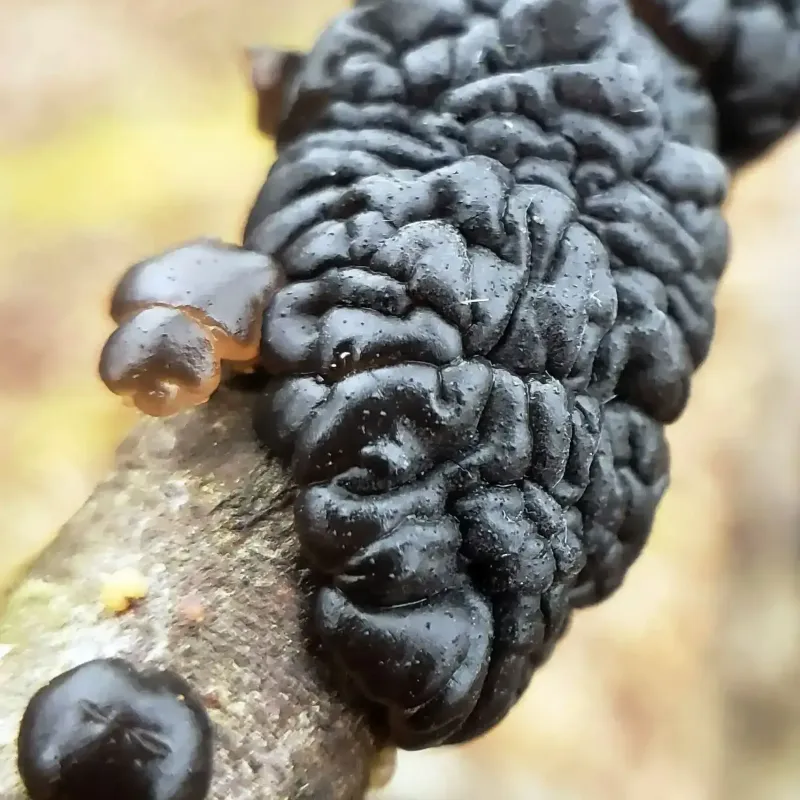
About
Auricularia auricula-judae, commonly known as the Wood Ear, Jelly Ear, or Black Fungus, is a gelatinous, ear-shaped mushroom widely used in Asian cuisine and traditional medicine. It grows on decaying wood, especially elder trees, and is prized for its crunchy texture, mild flavor, and health-promoting properties. Often rehydrated from its dried form, it’s commonly found in Chinese stir-fries, soups, and salads.
History
The name “auricula-judae” ("Judas' ear") stems from European folklore that it grew on the elder tree where Judas Iscariot supposedly hanged himself. In Asia, however, it has a long and respected history in Chinese and Japanese medicine, where it is known for promoting circulation, reducing cholesterol, and supporting overall vitality.
It has been cultivated for centuries in China and is one of the oldest domesticated mushrooms. Today, it remains a staple in Chinese, Thai, and Vietnamese dishes, often appreciated more for texture than taste.
Overview
The Wood Ear mushroom has a rubbery, gelatinous texture and an ear-like shape. It ranges in color from brown to black and grows in clusters on dead hardwood, especially elder, beech, or sycamore. It can grow year-round in humid climates.
Culinarily, it is mild but valued for its crunch. It's low in calories and high in fiber, iron, and antioxidants. Medicinally, it is believed to improve blood health, reduce inflammation, and support immune function. It is almost always eaten cooked and is frequently sold dried for long shelf life and convenience.
Flavors
Mild
A mild flavor, often used in soups and stews
Textures
Gelatinous
A unique gelatinous texture when cooked
Rubbery
Firm, jelly-like texture
Chewy
Pleasantly chewy when cooked
Fragrances
Earthy
Woodsy, forest floor aroma
Physical Characteristics
Caps:
Ear-shaped, gelatinous, brown
Gills:
None
Helps With
Immune System
Shown to stimulate immune system function
Cholesterol
May help lower LDL cholesterol levels
Beta Glucans
Linked to improved glycemic control and insulin sensitivity
Medicinal Chemistry
Similar Species

Species: Exidia glandulosa
Edibility: poisonous
Key Differences: Both species are jelly fungi and can be found growing on dead wood. However, they can be distinguished by their color and texture: Auricularia Auricula-judae is brown and ear-like with a smooth texture, while Exidia glandulosa is black and brain-like with a bumpy texture.

Species: Exidia glandulosa
Edibility: poisonous
Nutrition Facts
Mushroom Ratings
0.0
Based on 0 Reviews
5
★4
★3
★2
★1
★Share your thoughts
If you've consumed this mushroom, share your thoughts with our community
References
Compounds originating from the edible mushroom Auricularia auricula-judae inhibit tropomyosin receptor kinase B activity
The therapeutic potential of wood ear mushroom (Auricularia auricula) in atherosclerotic cardiovascular disease through its antihyperlipidemic and anti-inflammatory actions
This study demonstrates, for the first time, that substances originating from A. auricula-judae exhibit TrkB-inhibition properties and hold therapeutic potential.
2023
This study demonstrated the antihyperlipidemic, anti-inflammatory, and antioxidant properties of Auricularia auricula extracts.
2021